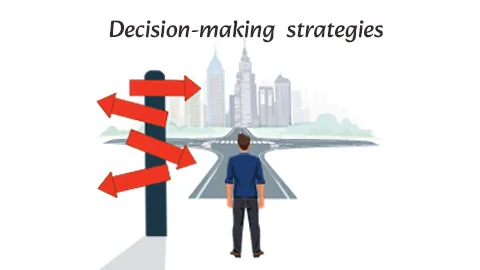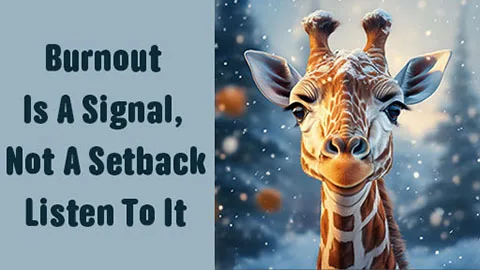
The Art of Letting Go
Too often, we find ourselves trapped in loops—reliving old wounds, replaying past mistakes, and hoping that something will change. We think that by holding onto the pain, we can somehow fix it, but the truth is, the more we cling, the harder it becomes to move forward. Real change doesn’t come from holding on; it comes from the courage to let go.
When I first started chasing my dreams, I had this picture in my head of how everything should unfold. I had a clear vision, a path I thought was the right one, and every step seemed like it would lead me to the success I wanted. But there was one problem: I couldn’t let go of the past.
I held on tightly to old ideas, past mistakes, and outdated expectations. I thought if I just tried harder or did more of what worked before, the answers would appear. But no matter how hard I worked, something always felt off.
It was like I was running with a backpack full of bricks—each piece of the past weighed me down. The fear of failure, the perfectionism, the need for validation—it was all still with me. And as much as I tried to move forward, I kept dragging that weight behind me, making progress feel sluggish, and success feel distant.
Then, one day, something clicked. I realized the one thing that was truly holding me back wasn’t my lack of effort—it was my inability to let go.
Letting go isn’t about giving up—it’s about releasing what no longer serves you. It’s about unburdening yourself from expectations, fears, and attachments to things that prevent you from moving forward. It’s about making space for new opportunities, for growth, and for the success you deserve.
But letting go is hard. It takes courage. It takes vulnerability. And, most importantly, it takes awareness. You have to recognize what’s holding you back before you can release it. Whether it’s a toxic relationship, an outdated belief, or an unhealthy attachment to perfectionism, identifying what no longer serves you is the first step.
Here are 7 Techniques to Help You Let Go Step-by-Step:
1. Acknowledge What You’re Holding On To
Before you can let go, you need to identify what’s weighing you down. Whether it’s a fear, a regret, a relationship, or a past failure, take time to reflect on what you’re still holding onto. Journaling or meditating can help you process these emotions and bring clarity.
2. Accept Your Emotions
Emotions are natural, and they’re not something to be ashamed of or ignore. Allow yourself to fully feel what you’re experiencing—whether it’s sadness, anger, or disappointment. Acknowledging your emotions is the first step in releasing them. It’s okay to feel, but don’t let those feelings define you.
3. Challenge Limiting Beliefs
Often, we hold on to things because of limiting beliefs—ideas about ourselves or the world that are no longer serving us. For example, “I’m not good enough,” or “I’ll never succeed.” Challenge these beliefs by asking, “Is this still true?” Replace them with more empowering thoughts, such as “I am capable,” or “I can change.”
4. Practice Forgiveness
Letting go often requires forgiving others or, most importantly, yourself. Holding on to grudges or past mistakes only keeps you stuck. Try to release resentment by acknowledging the pain, but choosing to forgive—not for the other person, but for your own peace and growth.
5. Focus on the Present Moment
The more we focus on past regrets or future worries, the harder it is to move forward. Practice being present. Engage in mindfulness techniques like deep breathing, grounding exercises, or simply focusing on what’s in front of you right now. When you stay in the present moment, you free yourself from the grip of the past.
6. Let Go of Perfectionism
Perfectionism is a major source of stress and dissatisfaction. Learn to embrace imperfection by understanding that mistakes are part of growth. Let go of the need to control every outcome, and instead, focus on doing your best and trusting the process.
7. Release Attachments to Outcomes
One of the biggest blocks to letting go is attachment to specific outcomes. We often think that things must turn out a certain way for us to be happy. The truth is, when we release attachment to any one outcome, we open ourselves up to a world of possibilities. Trust that whatever happens will be what’s meant for you.
“What the caterpillar calls the end, the rest of the world calls a butterfly.” – Lao Tzu
I remember feeling a sense of relief when I started to let go. Each time I released an old fear, a limiting belief, or a failure from the past, I felt lighter, freer. And, ironically, the more I let go, the more I started to see results in my life and work. I stopped clinging to outcomes and instead focused on the process, trusting that I was exactly where I needed to be.
Research supports the idea that letting go can be incredibly liberating. Studies on emotional regulation show that individuals who are able to release negative emotions and focus on the present are more resilient and adaptable. When you stop dwelling on the past or worrying about the future, you free yourself to fully engage in the present moment, where true growth happens.
One study by the University of California even found that people who let go of grudges and negative emotions have lower levels of stress and improved overall well-being. The ability to let go of what’s holding you back—whether it’s negative emotions, past mistakes, or unrealistic expectations—creates space for clarity, creativity, and true personal growth.
I’ve learned that letting go is not a one-time decision—it’s a practice. It’s about regularly checking in with yourself, reflecting on what’s weighing you down, and making the conscious choice to release it. It’s about shifting your focus from what you can’t control to what you can.
So, if you’re holding on to something that’s keeping you stuck—whether it’s a fear, a regret, or a story about who you are—let it go. Give yourself permission to move forward, to trust in your journey, and to embrace the unknown. The art of letting go is not a sign of weakness—it’s a sign of strength, and it’s the key to unlocking your true potential.
In the end, the more we let go, the more we open ourselves to the fullness of life. Letting go is the bridge that connects us to the future we deserve. So, take a deep breath, release what’s no longer serving you, and step forward with confidence. Your best self is waiting on the other side.




